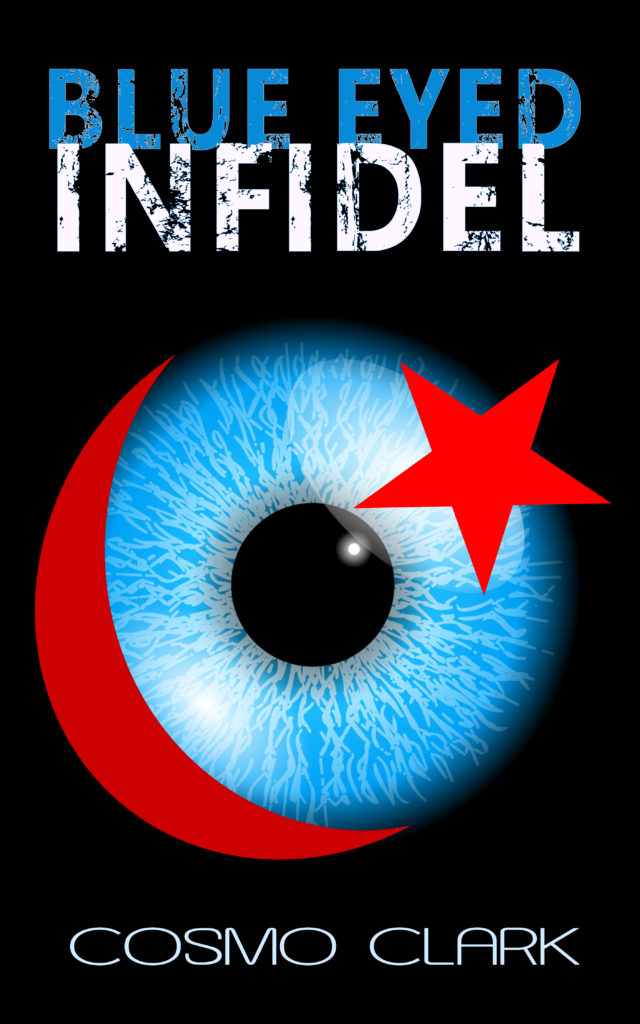 Cosmo Clark is a cybersecurity and cyber terrorism analyst and observer whose first novel, Blue Eyed Infidel, a satirical sci-fi thriller in the vein of Orwell’s 1984, hits the UK shelves this week. Here Clark (a pseudonym) argues that computers, not bombs, will win the war on terror.
Cosmo Clark is a cybersecurity and cyber terrorism analyst and observer whose first novel, Blue Eyed Infidel, a satirical sci-fi thriller in the vein of Orwell’s 1984, hits the UK shelves this week. Here Clark (a pseudonym) argues that computers, not bombs, will win the war on terror.
What do you think is the best way to win an argument? When I was at primary school, John Biggers, the village bully, thought he had the answer: to punch me in the face. Hard.
But violence didn’t work in the playground and it doesn’t work in the real world, either. Invading Iraq and bombing ISIS in Syria might win a few headlines for politicians, but in the long term, all it really does is create more terrorists, and leads directly to more attacks here in the UK.
It is my firm view (and one shared by a wealth of academics) that technology, not bombs, will win the global war on terror.
1. In-APP-propriate action: why we should boost, not ban, encrypted chat apps
Extremists talk to each other using secretive, encrypted chat apps. That’s how they groom new members, organise attacks and keep out of the public eye.
Our kneejerk reaction to that has always been to shut these apps down. But that would be a big mistake. Banning one type of app (or making it less secure) will only lead to more. That is a battle that can never be won.
Instead, we should be encouraging their use; remember, loose lips have and always will sink ships. We should be using covert spyware to infiltrate the apps and identify the bad guys.
2. Jihadi Join: why UK spies should be posing as online extremists
Islamic extremists will never love the UK. They don’t feel loyalty to a passport, only to their God. Trying to force them into ‘being British’ or to ‘integrate’ is a total waste of time and money, and just helps them know what to say in order to disappear into our society.
Instead, we should talk to extremists online in ways that make sense to them. To start with, that will involve doing things which will seem completely counter-intuitive. Let’s say you are a jihadi who wants to blow himself up. If you create an online persona as someone who can help them make that bomb, it’ll be much easier to grab the perpetrator – and the rest of his terror cell – when the time comes.
3. Dead ringer: using deceased ISIS fighters to communicate with terror cells
Technology changes quickly, but we’ve got two exclusive advantages right now that we should be using more. Firstly, we must put more pressure on social media companies like Facebook and YouTube to track (rather than ban) and report on Islamic extremists using their platforms. That’s harder than you might think.
Secondly, we’ve got access to cool resources like artificial intelligence. My favourite idea is to create fake cyber-personalities, ‘chatbots’ if you like, which are smart enough to hold conversations with real-world Islamic extremists. To be genuinely believable, these cyber-personalities could actually appear to be real people. There are roughly 25,000 Islamic extremists in the UK, and about 1,000 British jihadis who went to fight for ISIS and who have since gone missing. If a few of those deceased individuals popped up online, they could be treated as heroes. Only those ‘in the know’ would ever know the truth.
Blue Eyed Infidel by Cosmo Clark is out now, priced £9.99 in paperback and £3.49 as an eBook, and is available at Amazon UK. Visit www.cosmoclark.com.






